Genus Pomoxis Rank Species Symbol of Louisiana | Phylum Chordata Scientific name Pomoxis annularis Higher classification Crappie | |
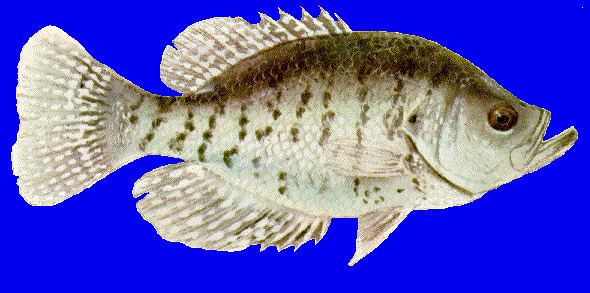 | ||
Similar Crappie, Black crappie, Green sunfish, White bass, Redear sunfish | ||
Best ever crappie fishing video on spawning black and white crappie by willcfish tips and tricks
The white crappie (Pomoxis annularis) is a freshwater fish found in North America, one of the two crappies. Former common names include goldring and silver perch. The USS Goldring is named for the fish.
Contents
- Best ever crappie fishing video on spawning black and white crappie by willcfish tips and tricks
- Giant white crappie on glen elder reservoir in depth outdoors tv season 8 episode 9
- Description
- Habitat
- Reproduction
- References
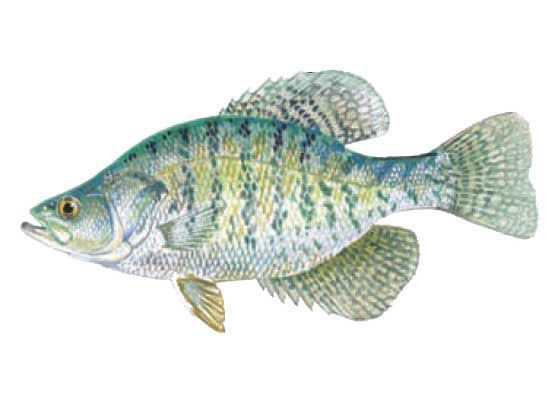
Giant white crappie on glen elder reservoir in depth outdoors tv season 8 episode 9
Description
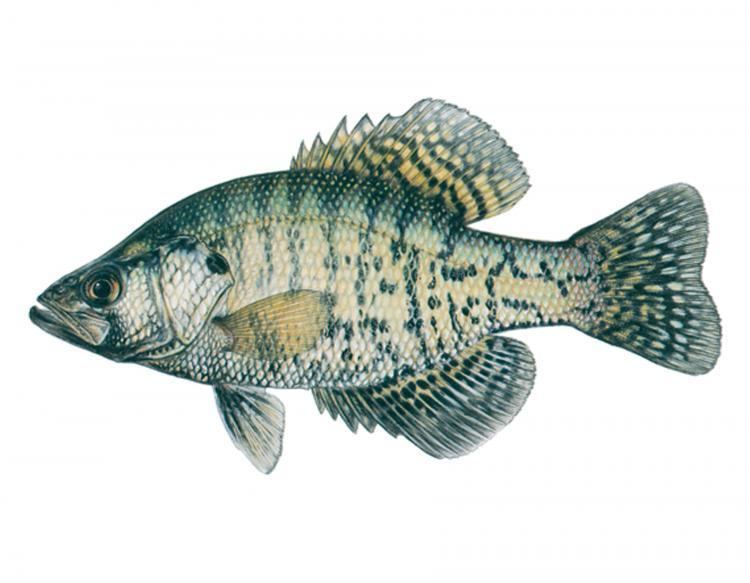
White crappies are very similar in appearance to black crappies. They have 5–10 vertical bars along their body, rather than the randomly scattered spots like the black crappie. It has a silvery color with green or brown shades along its back, with dark lateral bars along its side and a white belly. The dorsal fin of the white crappie starts further back on the body than that of the black crappie. White crappies are also slightly more elongated than black crappie. The species is a deep-bodied fish with a flattened body. It has spinous rays and ctenoid scales. Both species of crappie have a terminal mouth with many small conical teeth. The teeth occur in two rows along the mouth and are called cardiform, because they resemble a tool used for wool carding. White crappie belong to the Infraclass Teleostei, which is one of three infraclasses in the class Actinopterygii.
White crappie rarely exceed two pounds, and live around 2–7 years. The current for all-tackle fishing world record for a white crappie is 2.35 kilograms (5.2 lb).
Habitat
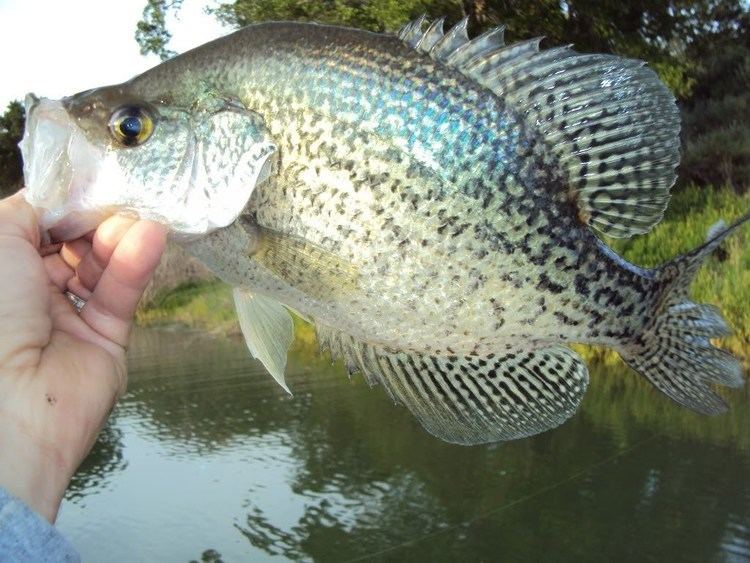
White crappie can be found in large rivers, reservoirs and lakes. White crappie are more tolerant of turbid (murky) waters than black crappie. These crappie usually outnumber black crappie in turbid waters and where there is very little rooted aquatic vegetation. White crappie are most commonly found in rivers and low-velocity areas such as pools and backwaters of rivers. They are most abundant in lakes and reservoirs that are larger than 5 acres.
Reproduction
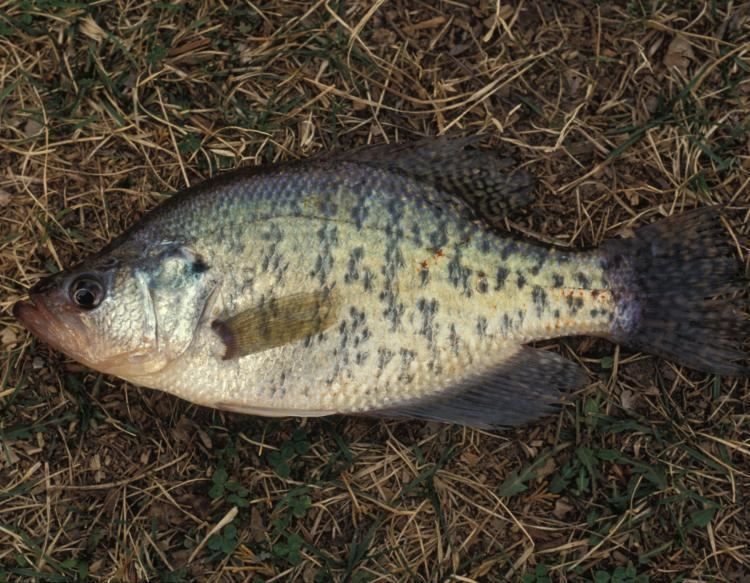
White crappie spawn in May and June. Spawning occurs when the water temperature reaches 56 degrees Fahrenheit. Males construct nests by creating small bowl shaped depressions on the bottom around brush, rocks, and logs in shallow water. Females lay 5,000 to 30,000 eggs.The males guard these nests until the fry swim away.
Adult crappies feed mainly on other fish and some large invertebrates such as crayfish and hellgrammites. Young crappie feed primarily on small invertebrates during their first year of life.
